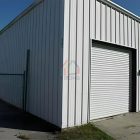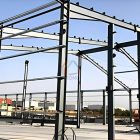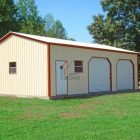What are the advantages of metal buildings?
Metal buildings refer to buildings with steel, aluminum alloy and other metal materials as the main structural materials. Metal building offer many advantages over traditional concrete and wood buildings. This article will explore the advantages of metal structure building in terms of durability, flexibility, sustainability and environmental protection.
Metal buildings are highly durable. Metal materials have high wind resistance and earthquake resistance, and can withstand large impact forces in natural disasters. Concrete buildings, by contrast, are vulnerable to damage during natural disasters such as earthquakes. Metal structure buildings are also resistant to corrosion and fire because the metal material won’t get wet, rot or burn. This allows metal buildings to remain structurally stable and safe during long-term use.
Metal buildings are highly flexible. Metallic materials can be easily machined, cut and welded, so architectural structures of all shapes and sizes can be manufactured. This allows metal structure buildings to have more design freedom and can meet different site and functional requirements. In addition, the structure of metal building is relatively light and can be remodeled and disassembled more easily, which is of great significance in urban renewal and sustainable development.

Metal buildings are also highly sustainable. Metal materials can be recycled, and the recycling rate is high. This reduces the consumption of natural resources and reduces environmental pollution. At the same time, the construction time of metal building is relatively short, which reduces disturbance and noise pollution to the construction site and improves construction efficiency. Moreover, metal structure building can better adapt to climate change during use, reducing energy consumption and operating costs. These characteristics make metal buildings an important option for sustainable construction.
Metal buildings are more environmentally friendly. The production process of metal materials is relatively less polluting to the environment, and metal structure buildings will not release harmful substances during use. In addition, metal buildings can incorporate solar panels and other renewable energy technologies, reducing dependence on traditional energy sources and lowering carbon emissions. At the same time, energy-saving technologies such as thermal insulation, insulation and ventilation systems can be used in the design and construction of metal structure building to reduce energy consumption. These measures give metal building a clear advantage in terms of environmental protection.
To sum up, metal buildings have many advantages in terms of durability, flexibility, sustainability and environmental protection. This makes metal construction an important trend in modern architecture. With the advancement of science and technology and people’s pursuit of sustainable development, the application range of metal structure building will be further expanded to create a safer, more comfortable and sustainable building environment for people.












